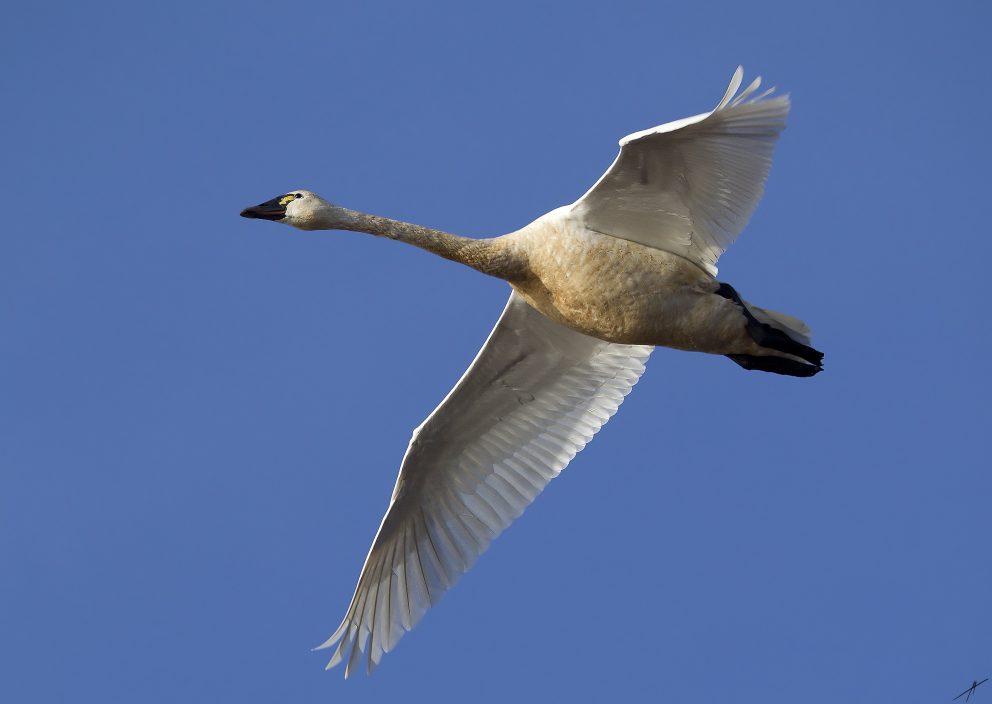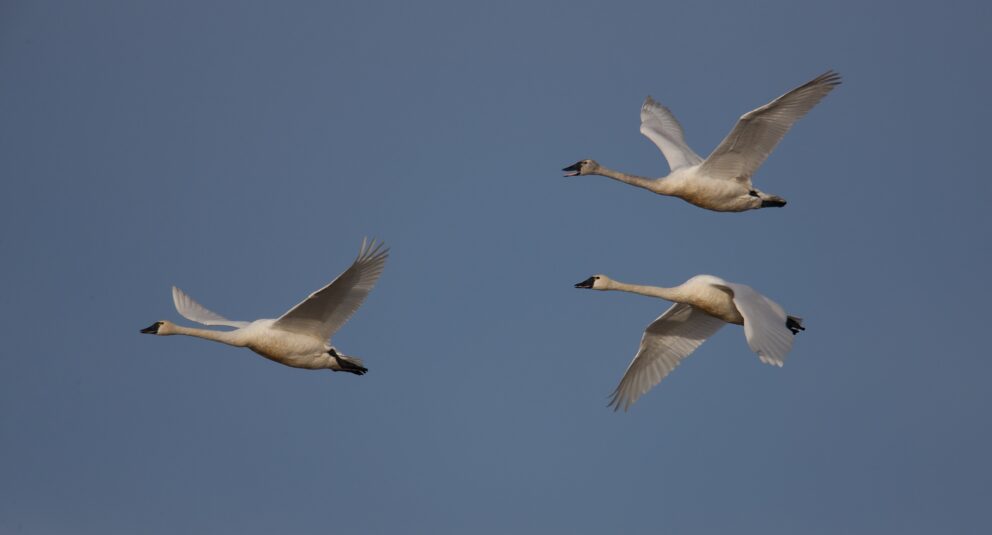- SCIENTIFIC NAME
- Cygnus columbianus
- CLASSIFICATION
- Bird
- LIFE SPAN
- 15-20 Years
- SIZE
- 47-58” | 8.5-23lbs
- STATE CONSERVATION STATUS
-
- State Protected
- FEDERAL CONSERVATION STATUS
- Least Concern
- GAME STATUS
- Game
- GAME TYPE
- Waterfowl
- Washoe
- Humboldt
- Pershing
- Churchill
- Mineral
- Lyon
- Douglas
- Carson City
- Storey
- Elko
- Lander
- Eureka
- White Pine
- Esmeralda
- Nye
- Lincoln
- Clark
Habitat & Range
The Tundra Swan breeds in the arctic tundra on lakes, large rivers, and bays near the coast. When migrating and during the winter they prefer shallow water such as marshes, slow-moving streams and rivers, and even flooded agricultural lands. In Nevada, they are typically found during the winter and during migration in the northern parts of the state.
- Agricultural Lands
- Lakes and reservoirs
- Marsh
Threats
- Drought
- Habitat Loss
- Invasive Species
- Water Diversion
Natural History
Tundra Swans form strong pair bonds that may last for years. They have one brood per year that ranges between three and seven eggs. If the temperature is warmer, they will have more eggs. Eggs are laid in a large nest on the ground, and both male and female incubate the eggs as well as help with rearing the cygnets. Shortly after hatching, cygnets are mobile, however they remain with both their parents most of their first year.
These swans are very social and interact often with other swans within their populations. They have a social structure within their groups and families of swans form a unit including both the male, female, and their cygnets. Unpaired swans are ranked lower in the hierarchy.
Tundra Swans are herbivores and consume many different types of wild grasses. They will use their beaks to dig up tubers and roots underwater. They will consume the occasional aquatic invertebrate.
Fun Facts














